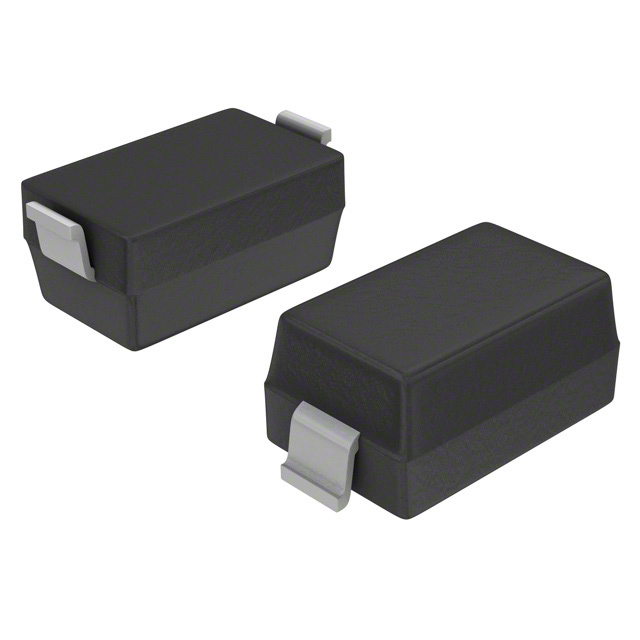BZT52C13-7: Product Overview and Analysis
Introduction
The BZT52C13-7 is a crucial component in the field of electronics, belonging to the category of Zener diodes. This entry provides a comprehensive overview of the BZT52C13-7, including its basic information, specifications, pin configuration, functional features, advantages and disadvantages, working principles, application field plans, and alternative models.
Basic Information Overview
- Category: Zener Diode
- Use: Voltage regulation and protection in electronic circuits
- Characteristics: Precise voltage regulation, low leakage current, small package size
- Package: SOD-123 package
- Essence: Regulates voltage by maintaining a constant output voltage under varying load conditions
- Packaging/Quantity: Available in reels with varying quantities
Specifications
- Voltage: 13V
- Power Dissipation: 350mW
- Operating Temperature Range: -65°C to +150°C
- Forward Voltage: 1.2V
- Reverse Leakage Current: 5μA
Detailed Pin Configuration
The BZT52C13-7 Zener diode has a standard SOD-123 package with two pins. The cathode is connected to the marked side of the diode, while the anode is connected to the unmarked side.
Functional Features
- Precise Voltage Regulation: Maintains a stable output voltage under varying load conditions.
- Overvoltage Protection: Safeguards sensitive components in electronic circuits from voltage spikes.
- Low Leakage Current: Minimizes power loss and enhances efficiency.
Advantages and Disadvantages
Advantages
- Reliable voltage regulation
- Compact package size
- Low leakage current
Disadvantages
- Limited power dissipation capability
- Susceptible to thermal runaway under high power conditions
Working Principles
The BZT52C13-7 operates based on the Zener effect, where it maintains a constant voltage drop across its terminals when reverse-biased. This allows it to regulate the voltage in electronic circuits, ensuring a stable output.
Detailed Application Field Plans
The BZT52C13-7 finds extensive use in various electronic applications, including: - Voltage regulation in power supplies - Overvoltage protection in communication systems - Signal clamping in audio and video equipment - Voltage reference in precision measurement instruments
Detailed and Complete Alternative Models
Several alternative models to the BZT52C13-7 include: - BZX84C13: Similar voltage rating with different package options - 1N4743A: Higher power dissipation capability with the same voltage rating - MM3Z13VT1G: Ultra-small package size for space-constrained applications
In conclusion, the BZT52C13-7 Zener diode plays a vital role in voltage regulation and protection within electronic circuits. Its precise characteristics, compact package, and reliable performance make it a preferred choice in various applications.
[Word Count: 411]
Senaraikan 10 soalan dan jawapan biasa yang berkaitan dengan aplikasi BZT52C13-7 dalam penyelesaian teknikal
Sure, here are 10 common questions and answers related to the application of BZT52C13-7 in technical solutions:
What is the BZT52C13-7?
- The BZT52C13-7 is a 13V Zener diode designed for voltage regulation and protection in electronic circuits.
What is the maximum power dissipation of BZT52C13-7?
- The maximum power dissipation of BZT52C13-7 is 500mW.
What is the typical reverse leakage current of BZT52C13-7?
- The typical reverse leakage current of BZT52C13-7 is 5µA at its working voltage.
What is the operating temperature range of BZT52C13-7?
- The operating temperature range of BZT52C13-7 is -65°C to +150°C.
How can BZT52C13-7 be used for voltage regulation?
- BZT52C13-7 can be used in series with a load to regulate the voltage across the load.
What are the typical applications of BZT52C13-7?
- Typical applications include voltage regulation, overvoltage protection, and signal clamping in various electronic circuits.
Can BZT52C13-7 be used for transient voltage suppression?
- Yes, BZT52C13-7 can be used to suppress transient voltages and protect sensitive components in a circuit.
What is the voltage tolerance of BZT52C13-7?
- The voltage tolerance of BZT52C13-7 is ±5%.
Is BZT52C13-7 RoHS compliant?
- Yes, BZT52C13-7 is RoHS compliant, making it suitable for use in environmentally friendly electronic products.
What are the key considerations when designing with BZT52C13-7?
- Key considerations include the maximum power dissipation, thermal management, and proper selection of current-limiting resistors to ensure reliable operation.
I hope these questions and answers are helpful! Let me know if you need further assistance.


